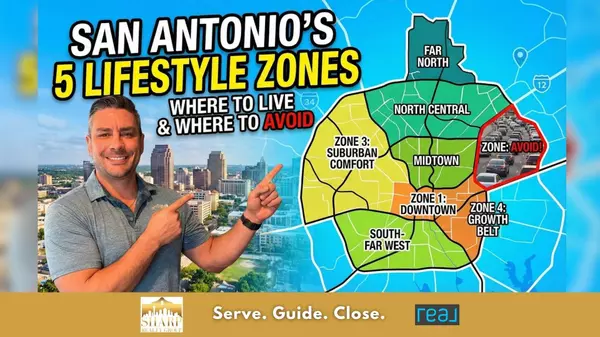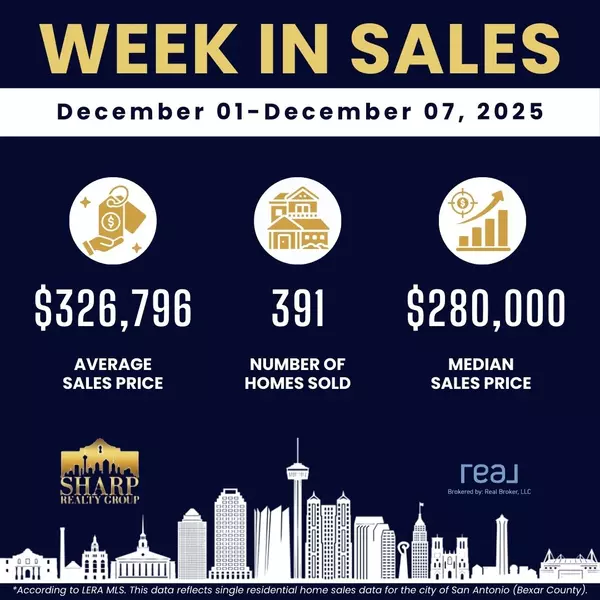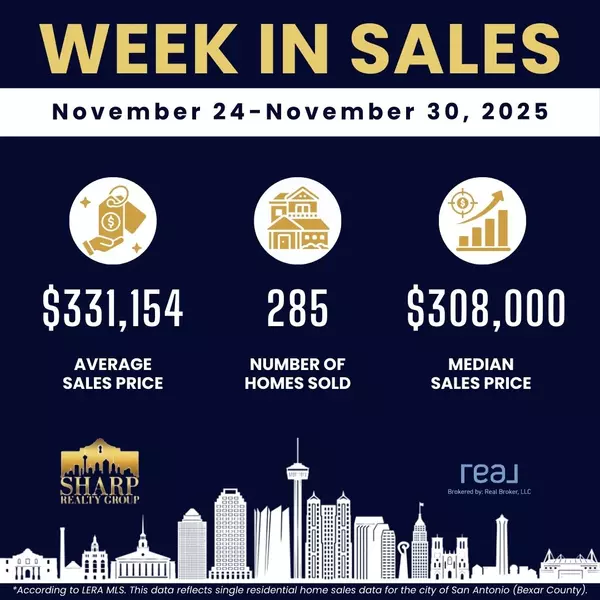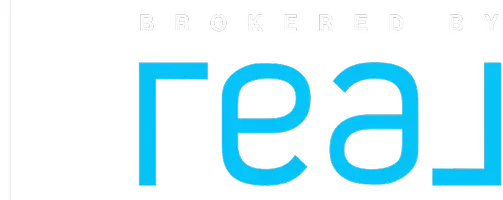Real Estate Market Trends in San Antonio, Texas That You NEED to Watch in 2025
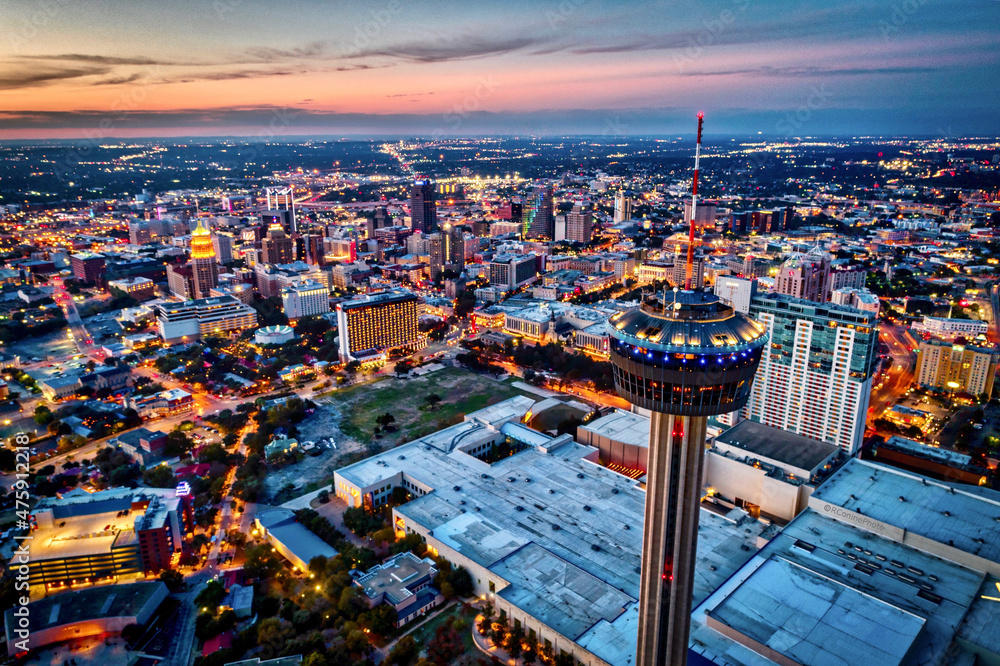
As a San Antonio real estate specialist — and a military relocation expert who’s helped hundreds of service members and families move here — I’ve seen our market ebb and flow. Heading into 2025, I expect more balance after the craziness of the last few years. Demand is still strong (thanks in part to steady job growth), but higher mortgage rates and more inventory mean buyers have more options than they did during the frenetic boom. In this post I’ll walk you through what I’m watching: home price forecasts, interest rate outlook, inventory levels, new home construction, shifts in demand, and even spotlight some key neighborhoods. I’ll also share real client stories and practical tips for buyers, sellers, and investors over the next year.
Housing Prices & Market Forecast
Home prices in San Antonio should stay fairly stable in 2025. After rapid gains in 2020–21, we’ve seen a slight pullback. For example, Zillow reports San Antonio’s average home value is about $257,632 (data through April 2025) – down about 3.1% from last year[1]. The median sales price in spring 2025 was roughly $282,667[2]. This tells me prices have essentially flatlined after the boom.
Local forecasts back up this view. Nationally, the Realtors® forecast sees home prices rising only modestly (around +2%) in 2025[3]. On the ground, many San Antonio experts I know expect a similar pattern – low single-digit appreciation in hot areas. One Alamo Heights broker told me: “With job growth on the rise and more people relocating from higher-cost cities, San Antonio’s demand should remain steady,” although gains won’t match pandemic-year spikes[4]. In fact, an agent’s analysis shows classic neighborhoods like Alamo Heights and Stone Oak might each see about 4–5% price gains next year[5]. In a nutshell, I tell clients to expect moderate price growth or stability: the market is cooling but not crashing.
I remind buyers that if prices are flat, the real savings come from shopping smart. For example, in one recent deal I helped negotiate, a military family bought a move-in-ready home for below the original price after it sat on the market longer than usual. Increased inventory (more on that below) has boosted buyer leverage. Sellers, however, should be realistic about pricing – excessive price hikes may just leave a home unsold. Most well-priced, updated homes are still selling within a few months, but patience is key.
Interest Rates & Affordability
Mortgage rates are a top concern for 2025 buyers and sellers. After spiking above 7% in 2023–24, experts expect a gradual decline. The National Association of Realtors predicts 30-year fixed rates will hover “near 6%” in 2025[6]. Locally, University of Texas–San Antonio economist Thomas Tunstall concurs that rates may remain high for now; he tells clients that if rates fall at all next year it will be very modest, and “high mortgage rates might continue” for a while[7].
Even small rate moves can change budgets. For instance, one local analysis shows that going from a 5.00% rate to 5.25% on a $300,000 loan raises the monthly payment by about $46 (from ~$1,610 to ~$1,656)[8]. That’s nearly $550 a year more, which can sway how much house a buyer can afford. In practice, I advise clients to lock in a rate quickly if they find a good deal. We also explore options like adjustable-rate mortgages (ARMs) or shorter-term loans if it makes sense for their timeline.
For sellers, knowing rates are higher means being flexible. I’ve seen some buyers include seller concessions in offers (for example, to help buy down the interest rate) just to make the deal work. It’s a new ballgame compared to 2021, so I counsel sellers on how financing works today so they aren’t blindsided. Bottom line: affordability is still better here than in Austin or Denver, but every fraction of a percent counts. As 2025 plays out, I’ll keep a close eye on any Fed rate changes and lender trends to guide my clients.
Inventory Levels & New Construction
One of the biggest stories in San Antonio right now is plentiful inventory. After hitting record lows in 2021, the housing supply has rebounded sharply. In fact, a June 2024 report noted San Antonio’s home inventory was up 28% year-over-year, with lots of new listings hitting the market[9]. Zillow data (Apr 2025) shows about 7,125 active listings in the city[10], a high level not seen in years. In practical terms, buyers have many more choices. I often tell first-time buyers that the “scarcity” pressure of 2020–21 is gone: you can afford to look patiently and compare homes.
What does this look like in real life? My office has listings that sat longer. For example, a home near Stone Oak listed for 45 days – far more than the 10–20 days that was common. As of mid-2024, San Antonio listings averaged 63 days on market – roughly double the U.S. average[11]. In many neighborhoods, you’re seeing more price drops and seller incentives to drum up offers. That means buyers have more negotiating power than a couple of years ago.
New home construction has also shifted. After a building boom, the number of new apartments under construction is actually falling below historical norms[12]. One market report projected that apartment completions could drop about 60% in 2025 compared to 2024[13], easing pressure on rental supply. (This is good news for investors and renters, since it could slow the supply glut we saw in 2023.) On the single‑family side, builders are still active in the suburbs around 1604 and Hwy 281, but they too face higher costs and interest rates. Some builders are offering incentives (like helping with closing costs) to keep things moving.
All told, more homes for sale and steady (or falling) mortgage rates should continue to cool the market gently. We’re moving toward a balanced market, where neither buyers nor sellers dominate.
Local Economy & Job Market
A healthy job market underpins demand. San Antonio’s economy is doing well, with steady growth in tech, healthcare, and government jobs. I often point to the Dallas Fed’s regional forecasts: they expect San Antonio to lead Texas in employment growth for 2025[14]. In April 2025 alone, SA payrolls jumped roughly 2.9% year-over-year. Sectors like professional/business services, construction, and manufacturing are adding the most jobs[15]. This is great for housing because more jobs mean more people moving here or upgrading homes.
In conversations with clients, we emphasize this strength. For instance, a young couple relocating to SA got excited when I showed them recent news of new defense contracts and medical campus expansions – it gave them confidence in the area’s future. Similarly, retirees and veterans like the fact that Texas (and Bexar County) tends to attract new residents thanks to our no‑income‑tax and veteran‑friendly climate. In short, I see no looming recession here; jobs are holding steady or growing. That helps keep demand from falling off a cliff.
With employment strong, I counsel buyers to act if they’re comfortable financially. If you have a solid job and credit, you won’t be competing for the last home on earth like before – but waiting too long might mean other buyers scoop up better deals first. The market is balanced enough now that delaying a few months won’t necessarily crash prices, but do know the pool of buyers is still there.
Neighborhoods & Housing Types
In 2025, location remains king. Different types of buyers will favor different areas of San Antonio. Here are some trends by neighborhood:
- Luxury Districts (Alamo Heights, The Dominion, Shavano Park): These well-established, upscale areas held up very well. Home values here tend to be more stable. We saw modest appreciation (a few percent) even as the overall market cooled[5]. I still have buyers looking in these neighborhoods, especially retirees and executives. Inventory here is tight, so good luxury listings still sell relatively quickly.
- Stone Oak & Northeast (North East ISD): Very popular with families. This area has many newer homes and excellent schools. It’s a favorite for military families too, since it’s reasonably close to the north side bases. Prices here might rise a few percent in 2025 (one estimate projects +4.4%)[5]. Inventory is improving, so buyers can find decent deals, but competition remains for top school zones. In my experience, new listings in Stone Oak are still snapped up fast if priced right.
- Central/Downtown (Pearl District, Southtown, King William): Urban living remains a niche market. Condo and townhome prices here are relatively flat. With more folks working from home, we’ve seen some city‑dwellers move a bit farther out, but young professionals still want downtown access. Sales volume is lower, but closings happen smoothly if pricing matches expectations.
- San Antonio Military Areas (Fort Sam, Lackland, Randolph Corridors): For military relocations, proximity to base is often a priority. Near Lackland, neighborhoods like Woodlake, Woodlawn Lake, and the San Antonio Missions area offer affordable choices. Terrell Hills and Alamo Heights (south side) are on the higher end near Lackland and Hemisfair — I’ve sold homes there to mid‑career officers who value the great schools (NEISD) and community. Around Fort Sam, city neighborhoods like Oakwell and Dignowity Hill are options, while Randolph families often shop up in Universal City or New Braunfels for more space. If you use a VA or BAH, it covers a nice home in these zones.
- South and West Side (Converse, Selma, New Braunfels): These outlying areas appeal to buyers on a budget who don’t mind commuting. New Braunfels and Schertz (in Guadalupe/Comal counties) saw a lot of construction in recent years. I counsel buyers there that their dollar goes further: a $300K budget can buy a big yard or new home. Inventory here is higher, so you might get more features for less money[16].
- Investment Hotspots: Investors have eyes on neighborhoods with strong rental demand. Areas like Northwest San Antonio (around La Cantera and Medical Center) and UTSA/Alamo Ranch area are popular, given high rents. In fact, Zillow’s data shows the average rent in San Antonio is around $1,428 as of April 2025[17]. (That’s after an 8% drop from mid‑2024[17], but it’s still pretty strong for the city.) With home prices in the $250–300K range, that translates to cap rates often in the 5–6% area – healthy returns. I’ve worked with a few investor clients putting down 20–25% and financing on multi‑unit homes; they see SA as relatively landlord‑friendly (no rent control, steady tenant demand).
Each family’s needs are different. I always match neighborhoods to lifestyles: a young couple might love vibrant city‑district lofts, while a military family with kids might prefer single‑family homes in Schertz or Stone Oak. The key is weighing trade‑offs (price vs commute vs schools), and I use local market data to guide them. For example, I’ll show them the RE/MAX report where San Antonio had some of the largest new listing increases (+20%) and one of the highest inventory levels in mid‑2024[11]. It helps frame their offers in context.
Tips for 2025 Buyers, Sellers & Investors
- Buyers: Get pre‑approved and stay ready. Inventory is better, but buyers who are ready to move (loan in hand) still get the best deals. Monitor interest rates – even a small drop can boost your buying power. Don’t overlook new construction: some builders are offering incentives like rate buydowns or credits for upgrades. Consider all loan options (VA, FHA, ARMs) with your lender. Finally, use a local agent who really knows San Antonio. For example, I maintain a Sharp Realty Group webpage where we handpick homes for military families near Fort Sam, Lackland, and Randolph so they can quickly find suitable listings[18].
- Sellers: Price it right from day one. With buyers having more choices, overpricing will just leave your home languishing. Small updates (fresh paint, lighting, landscaping) go a long way. I always provide sellers with a free home valuation to set expectations[19]. In one recent case, a seller followed our valuation and properly staged the house; it went under contract in 10 days. Highlight what makes your home special (neighborhood schools, low HOA, big yard) in the listing. Be prepared to negotiate — some buyers will ask for concessions or rate credits given the rate environment.
- Investors: San Antonio remains attractive for rental investments. Look for areas with job growth and new developments (like the Far North or Medical Center). Calculate your cap rate: with average rents around $1,450 and home prices $280–300K, many investors see 5–6%+ returns. Be mindful of changing tenant demand – the recent rent drop means you may have to price competitively or update properties to keep them leased. Also watch inventory: if a subdivision has lots of new rental units, that can pressure rents locally. Local rental data (like Zillow’s $1,428 rent index[17]) can help you forecast cash flow.
- Military Homebuyers/Sellers: Timing is key. If you’re being reassigned, plan months ahead. I counsel military clients on syncing selling and buying timelines. Use your VA or BAH benefits wisely — they often let you buy bigger than a civilian with the same pay. For example, an E‑5 with dependents might have a BAH that covers a $1,500 mortgage, which today could get you a nice 3‑bed home in areas like Southeast San Antonio. When I work with service members, we also consider school districts (if you have kids) and base commute. Don’t hesitate to get a local expert’s help on VA financing; rates and rules here can differ from other loans.
Above all, keep an eye on the big picture. As I tell clients: San Antonio is still more affordable than most major Texas cities, and our job growth and population trends give us a solid floor. But 2025 won’t be a repeat of 2021’s red‑hot market. Sellers should aim for fair pricing, and buyers should remember that with more supply, they don’t have to rush into a poor deal. If you’re considering a move this year – whether buying, selling, or investing – let’s talk strategy. I’m ready to share what my experience and these trends mean for you.
Key Takeaways
San Antonio’s 2025 market looks balanced. Prices are likely to rise only modestly (or hold steady)[1]. Mortgage rates are expected near 6%[6], so lock in rates early. Inventory is high (over 7,000 homes for sale)[10], giving buyers more choices. New construction – especially apartments – is slowing[12], which will ease future supply. The strong local economy (SA leads Texas in job growth)[14] underpins demand. My advice: buyers take advantage of the extra inventory, sellers price competitively, and investors focus on neighborhoods with rent growth. Reach out anytime – I’m here to help military and civilian clients navigate these trends and make smart moves in our market.
Frequently Asked Questions (FAQ)
What are the predicted home price trends for San Antonio in 2025? +
Experts expect home price growth to be modest in 2025—national forecasts around 2% and local projections 3–5% in popular areas—so prices should hold steady or creep up slightly.
How will interest rates affect San Antonio home buyers in 2025? +
Mortgage rates are projected to hover near 6–7%. Even a 0.25-point move can add about $50 to a typical monthly payment, so buyers should lock early or explore rate-buy-down options.
Which San Antonio neighborhoods are best to watch in 2025? +
Luxury: Alamo Heights, The Dominion, Stone Oak. Urban: Pearl & Southtown. Military-friendly: Schertz, Cibolo, other base-adjacent zones. Investor hotspots: Northwest & North SA near La Cantera and the Medical Center.
Is 2025 a buyer's market or seller's market in San Antonio? +
Inventory is up, giving buyers more choices, while strong employment keeps demand steady. Expect a balanced market—buyers can negotiate, and sellers who price right still close smoothly.

“Anthony Sharp helps families buy, sell, or relocate in San Antonio with confidence. Call 210-997-0763 to get started today.”
Citations
- [1] [2] [10] [16] San Antonio, TX Housing Market: 2025 Home Prices & Trends | Zillow
- [3] [6] More Home Buyers Expect Rosier 2025 Housing Outlook | NAR
- [4] [5] [8] 2025 San Antonio Housing Market Predictions — LRG Realty
- [7] Is 2025 a good year to buy a house in San Antonio? | KSAT
- [9] [11] [17] San Antonio housing market prices fall with above average inventory | MySA
- [12] [13] 2025 San Antonio Forecast – MMG Real Estate Advisors
- [14] [15] San Antonio will lead employment growth in Texas this year | TPR
- [18] Sharp Realty Group | San Antonio Military Relocation Realtor
- [19] How Much is My Home Worth? – Free Report | Sharp Realty Group
Categories
Recent Posts
